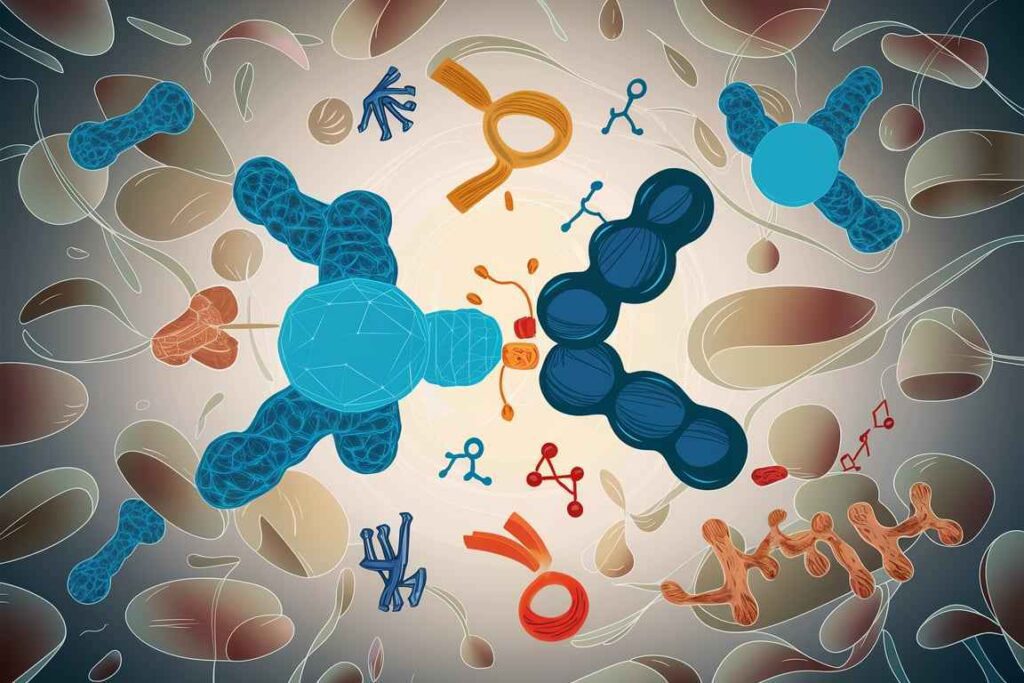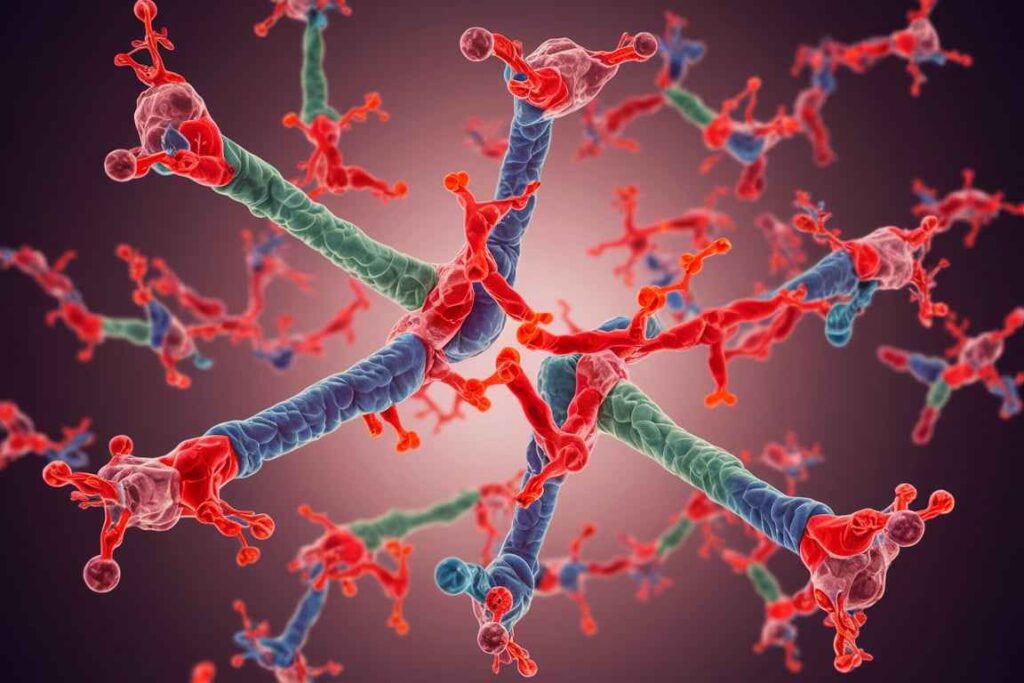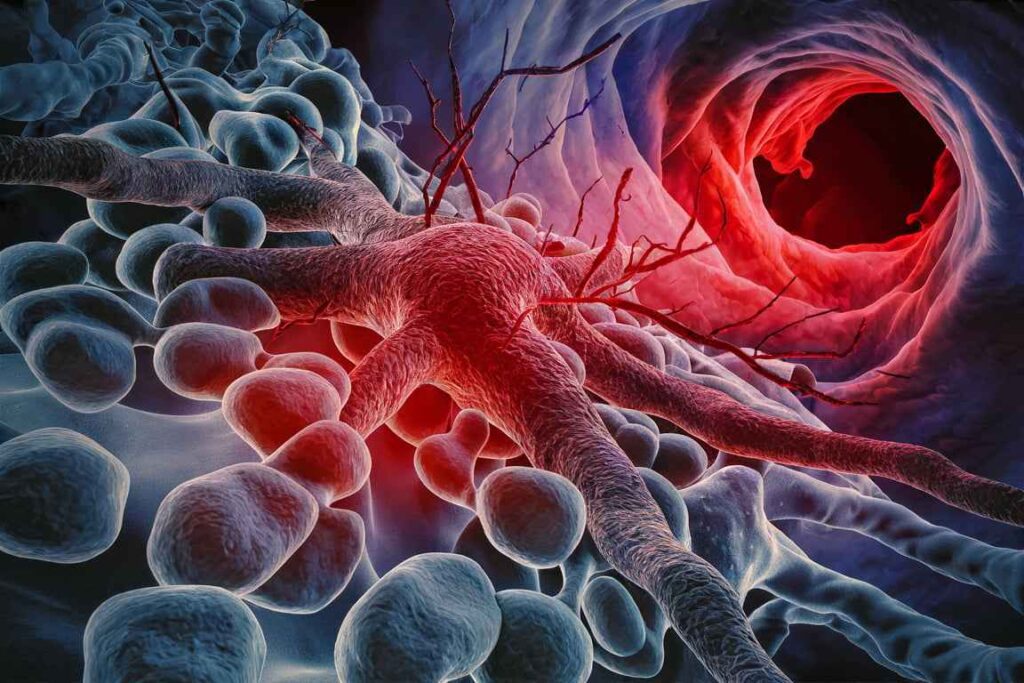E-cadherin (Epithelial cadherin) is a protein crucial for cell-cell adhesion in epithelial tissues. It plays a significant role in maintaining tissue architecture and cellular integrity. Disruptions in E-cadherin function can lead to pathological conditions, including cancer.
Table of Contents
E-cadherin signaling
E-cadherin signaling is the cellular communication channel mediated by E-cadherin, a transmembrane protein required for cell-cell contact in epithelial tissues. E-cadherin preserves tissue form and integrity through signaling connections with intracellular molecules that impact cell activity, such as adhesion, migration, proliferation, and survival.

E-Cadherin Signaling: Its Function in Cancer and Signal Pathways
E-cadherin (Epithelial cadherin) is a protein that promotes cell-cell contact in epithelial tissues. It contributes significantly to tissue architecture and cellular integrity. Disruptions in E-cadherin function can cause pathological diseases like as cancer.
E-Cadherin: Overview
- Structure: E-cadherin is a transmembrane protein made up of extracellular cadherin repeats, a single transmembrane domain, and a cytoplasmic tail that interacts with catenins (such as β-catenin).

- Function: It promotes homophilic cell-cell adhesion, which means that E-cadherin on one cell attaches to E-cadherin on another. This interaction is calcium-dependent and required for the creation and maintenance of epithelial layers.
Role in Cancer
Tumor suppression
- Cell Adhesion: E-cadherin promotes cell adhesion and epithelial integrity. The loss of E-cadherin function disturbs cell adhesion, increasing cellular motility and invasiveness, both of which are important hallmarks of cancer metastasis.
- Contact Inhibition: E-cadherin-mediated cell contact suppresses cell proliferation, a phenomenon known as contact inhibition. Loss of E-cadherin can cause uncontrolled cell proliferation.
The epithelial-to-mesenchymal transition (EMT)
- EMT is the process by which epithelial cells lose their properties, including E-cadherin expression, and gain mesenchymal traits, such as enhanced motility. EMT is an important phase in cancer metastasis.
- EMT markers include decreased E-cadherin and increased mesenchymal markers (such as N-cadherin and vimentin).
Metastasis:

- Invasion: When E-cadherin expression is reduced, cancer cells can separate from the original tumor and invade neighboring tissues.
- Dissemination: Cells with low E-cadherin expression can enter the bloodstream and disseminate to other organs, causing secondary tumors.
Signal pathways involving E-Cadherin
Wnt/β-Catenin pathway:
- β-Catenin plays a role via interacting with E-cadherin on the cell membrane. When E-cadherin is absent, β-catenin can enter the nucleus and activate Wnt target genes, resulting in increased cell proliferation and survival.
- Dysregulation of the Wnt/β-catenin pathway is frequent in malignancies, causing increased proliferation and reduced apoptosis.
The PI3K/Akt pathway
- Cell Survival: E-cadherin interacts with p120-catenin, which regulates the PI3K/Akt signaling pathway. The loss of E-cadherin can activate PI3K/Akt, increasing cell survival and resistance to apoptosis.
- Cancer Progression: Activation of the PI3K/Akt pathway promotes cell survival, proliferation, and motility.
Rho GTPases:
- Cell Migration: E-cadherin interaction controls the activity of Rho family GTPases (Rho, Rac, and Cdc42), which control cytoskeletal dynamics and migration.
- Cancer Invasion: E-cadherin depletion causes changes in Rho GTPase signaling, which promotes cell motility and invasion.
Hippo Pathway:
- Growth Inhibition: E-cadherin-mediated cell contact inhibits the Hippo pathway, which regulates cell growth and death via YAP/TAZ transcription coactivators.
- Cancer Development: Dysregulation of the Hippo pathway owing to E-cadherin loss can lead to enhanced cell proliferation and survival, which contributes to tumor growth.
Therapeutic implications
- Restoring E-Cadherin Function: Strategies for restoring E-cadherin expression or function may slow cancer growth and metastasis.
- Targeting downstream pathways: Potential cancer therapeutics involve inhibiting pathways activated by E-cadherin loss, including Wnt/β-catenin, PI3K/Akt, and Rho GTPases.
Frequently Asked Question(FAQ)
What is E-cadherin signaling?
E-cadherin signaling is the cellular communication channel mediated by E-cadherin, a transmembrane protein required for cell-cell contact in epithelial tissues. E-cadherin preserves tissue form and integrity through signaling connections with intracellular molecules that impact cell activity, such as adhesion, migration, proliferation, and survival.
What are the role in cancer of E-cadherin signaling?
The role in cancer of E-cadherin signaling are:
1. Tumor suppression
2. The epithelial-to-mesenchymal transition (EMT)
3. Metastasis
Related Article
Bergey’s Manual of Systematic Bacteriology and Determinative Bacteriology

